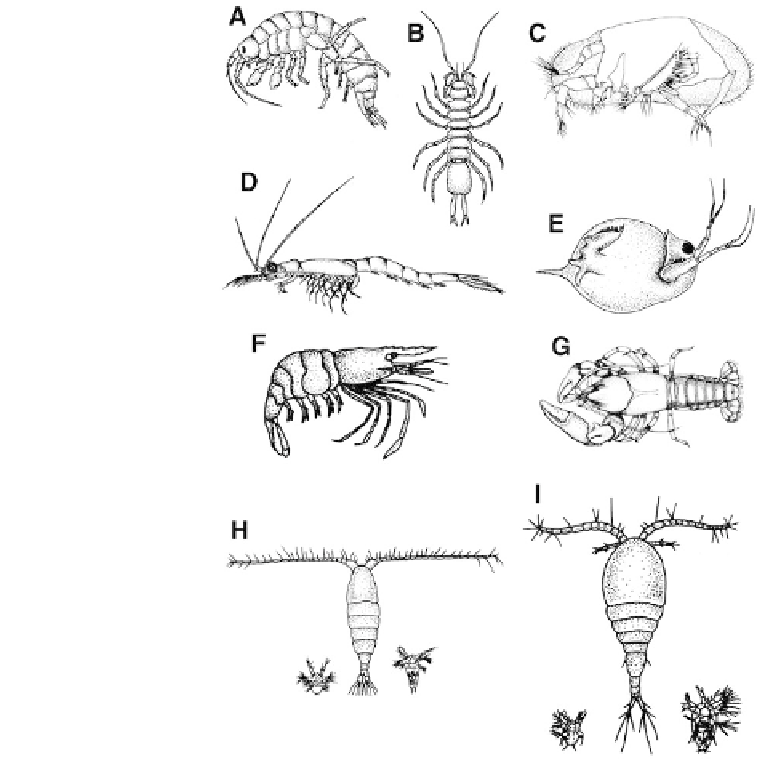Environmental Engineering Reference
In-Depth Information
FIGURE 9.11
Some representative Crustacea: (A)
Gammarus,
1 cm; (B)
Caecidotea,
2 cm;
(C)
Candona
with left valve carapace removed, 0.5 mm; (D)
Mysis,
1 cm; (E)
Daphnia,
0.5
mm; (F)
Palaemonias,
2 cm; (G)
Cambarus,
10 cm; (H) calanoid copepod and nauplii, adult
0.5 mm; and (I) cyclopoid copepod and nauplii, adult 0.5 mm (reproduced with permission
from Thorp and Covich, 1991b).
copepods can be herbivorous, detritivorous, carnivorous, or parasitic (some
on fish).
Reproduction of copepods is usually sexual. The fertilized eggs hatch into
a larval stage called a
nauplius
. Six naupliar stages are followed by six cope-
podite stages (the last being the adult stage). Plankton tows from lakes often
reveal numerous nauplii. Behavior of the copepods can be complex, with
predator avoidance, mating behaviors, and foraging behaviors all present.
The Branchiopoda includes the Cladocera (water fleas) and the fairy,
tadpole, brine, and clam shrimps. This order is generally composed of
small Crustacea with flattened leaf-like legs. They occur in a wide variety
of freshwater habitats but usually are not abundant in flowing waters.
There are about 400 species worldwide (Dodson and Frey, 1991). The
fairy, tadpole, and clam shrimps are large and susceptible to predation by

Search WWH ::

Custom Search